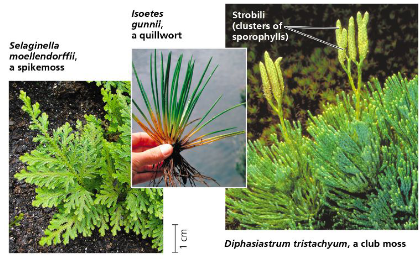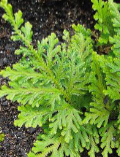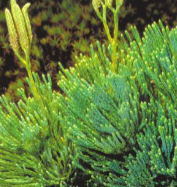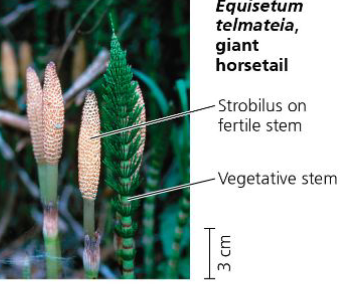Chapter 29: Seedless Vascular Plants
1/14
There's no tags or description
Looks like no tags are added yet.
Name | Mastery | Learn | Test | Matching | Spaced |
|---|
No study sessions yet.
15 Terms
Characterized by:
life cycles with dominant sporophyte
Vascular tissues (xylem and phloem)
well-developed roots and leaves
Xylem
conducts most of the water and minerals
includes dead cells called tracheids
Phloem
consists of living cells and distributes sugars, amino acids, and other organic products
Lignin
found in vascular tissues
“Lignified”
provides structural support
Classification of Seedless Vascular Plants
Phylum Lycophyta (club mosses, spike mosses, quillworts)
Phylum Monilophyta (ferns, horsetails, whisk ferns)
Lycophytes (Phylum Lycophyta)
many grown on tropical plants as substrate (not a parasite)
forest floors
underground

Selaginella moellendorffii
Lycophytes;
spike mosses

Isoetes gunnii
Lycophytes;
quillwort

Diphasiastrum tristachyum
Lycophytes;
clubmosses

Homosporous
Phylum Lycophyta; produce one type of spore
Ex: clubmosses
Heterosporous
Phylum Lycophyta; produce two different types of spores
Ex: quillwort and spikemoss
Monilophytes (Phylum Monilophyta)
ferns, horsetails, whisk ferns (and relatives)
Ferns
Monilophytes;
have megaphylls
horizontal stems with large leaves (fronds)
homosporous
Ex: Matteuccia struthiopteris (ostrich fern)

Horsetails
Monilophytes;
gritty texture
also called “arthrophytes”
stem = main photosynthetic organ
Ex: Equisetum telmateia (giant horsetail)

Whisk Ferns and Relatives
Monilophytes;
dichotomously branching stems but not roots
Ex: Psilotum nudum (whisk fern)
